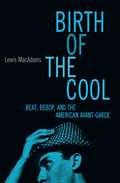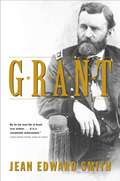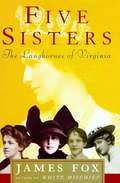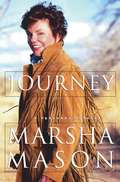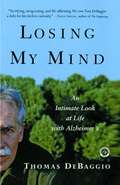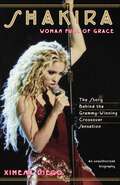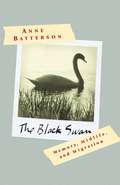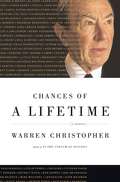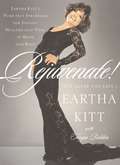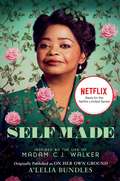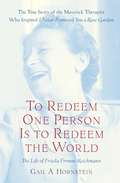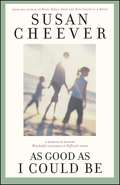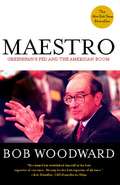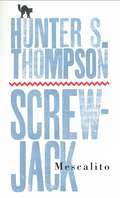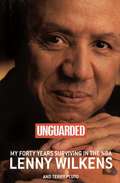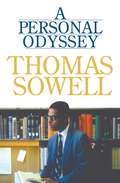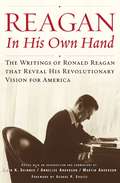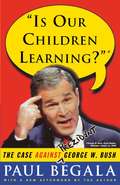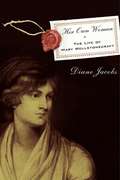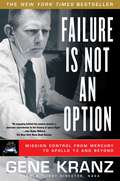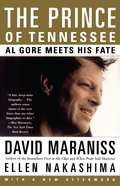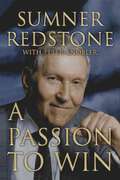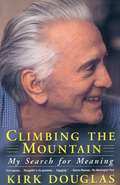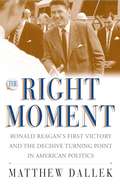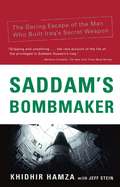- Table View
- List View
Birth of the Cool
by Lewis MacadamsMiles Davis and Juliette Greco, Jackson Pollock and Jack Kerouac, Marlon Brando and Bob Dylan and William Burroughs. What do all these people have in common? Fame, of course, and undeniable talent. But most of all, they were cool. Birth of the Cool is a stunningly illustrated, brilliantly written cultural history of the American avant-garde in the 1940s and 1950s -- the decades in which cool was born. From intimate interviews with cool icons like poet Allen Ginsberg, bop saxophonist Jackie McLean, and Living Theatre cofounder Judith Malina, award-winning journalist and poet Lewis MacAdams extracts the essence of cool. Taking us inside the most influential and experimental art movements of the twentieth century -- from the Harlem jazz joints where Dizzy Gillespie and Charlie Parker invented bebop to the back room at Max's Kansas City when Andy Warhol was holding court to backstage at the Newport Folk Festival the night Bob Dylan went electric, from Surrealism to the Black Mountain School to Zen -- MacAdams traces the evolution of cool from the very fringes of society to the mainstream. Born of World War II, raised on atomic-age paranoia, cast out of the culture by the realities of racism and the insanity of the Cold War, cool is now, perversely, as conventional as you can get. Allen Ginsberg suited up for Gap ads. Volvo appropriated a phrase from Jack Kerouac's On the Road for its TV commercials. How one became the other is a terrific story, and it is presented here in a gorgeous package, rich with the coolest photographs of the black-and-white era from Robert Doisneau, Henri Cartier-Bresson, Man Ray, and many others. Drawing a direct line between Lester Young wearing his pork-pie hat and his crepe-sole shoes staring out his hotel window at Birdland to the author's three-year-old daughter saying "cool" while watching a Scooby-Doo cartoon at the cusp of a new millennium, Birth of the Cool is a cool book about a hot subject...maybe even the coolest book ever.
Grant
by Jean Edward SmithUlysses S. Grant was the first four-star general in the history of the United States Army and the only president between Andrew Jackson and Woodrow Wilson to serve eight consecutive years in the White House. As general in chief, Grant revolutionized modern warfare. Rather than capture enemy territory or march on Southern cities, he concentrated on engaging and defeating the Confederate armies in the field, and he pursued that strategy relentlessly. As president, he brought stability to the country after years of war and upheaval. He tried to carry out the policies of Abraham Lincoln, the man he admired above all others, and to a considerable degree he succeeded. Yet today, Grant is remembered as a brilliant general but a failed president. In this comprehensive biography, Jean Edward Smith reconciles these conflicting assessments of Grant's life. He argues convincingly that Grant is greatly underrated as a president. Following the turmoil of Andrew Johnson's administration, Grant guided the nation through the post- Civil War era, overseeing Reconstruction of the South and enforcing the freedoms of new African-American citizens. His presidential accomplishments were as considerable as his military victories, says Smith, for the same strength of character that made him successful on the battlefield also characterized his years in the White House. Grant was the most unlikely of military heroes: a great soldier who disliked the army and longed for a civilian career. After graduating from West Point, he served with distinction in the Mexican War. Following the war he grew stale on frontier garrison postings, despaired for his absent wife and children, and began drinking heavily. He resigned from the army in 1854, failed at farming and other business endeavors, and was working as a clerk in the family leathergoods store when the Civil War began. Denied a place in the regular army, he was commissioned a colonel of volunteers and, as victory followed victory, moved steadily up the Union chain of command. Lincoln saw in Grant the general he had been looking for, and in the spring of 1864 the president brought him east to take command of all the Union armies. Smith dispels the myth that Grant was a brutal general who willingly sacrificed his soldiers, pointing out that Grant's casualty ratio was consistently lower than Lee's. At the end of the war, Grant's generous terms to the Confederates at Appomattox foreshadowed his generosity to the South as president. But, as Smith notes, Grant also had his weaknesses. He was too trusting of his friends, some of whom schemed to profit through their association with him. Though Grant himself always acted honorably, his presidential administration was rocked by scandals. "He was the steadfast center about and on which everything else turned," Philip Sheridan wrote, and others who served under Grant felt the same way. It was this aura of stability and integrity that allowed Grant as president to override a growing sectionalism and to navigate such national crises as the Panic of 1873 and the disputed Hayes-Tilden election of 1876. At the end of his life, dying of cancer, Grant composed his memoirs, which are still regarded by historians as perhaps the finest military memoirs ever written. They sold phenomenally well, and Grant the failed businessman left his widow a fortune in royalties from sales of the book. His funeral procession through the streets of Manhattan closed the city, and behind his pallbearers, who included both Confederate and Union generals, marched thousands of veterans from both sides of the war.
Five Sisters
by James FoxThe author of the bestseller White Mischief tells the story of the beautiful Langhorne sisters, who lived at the Pinnacle of high and powerful society from the end of the Civil War through the Second World War. Making their way across two continents, they left in their wakes rich husbands, fame, adoration, and scandal. Lizzie, Irene, Nancy, Phyllis, and Nora were born in Virginia to a family impoverished by the Civil War. Their father remade his fortune by collaborating with the Yankees and building rail-roads; the sisters became southern belles and northern debutantes. James Fox draws on unpublished correspondence between the sisters and their husbands, lovers, children, and the powerful and glamorous of their day to construct a plural topography with the scope of a grand novel and the pace of a historical thriller. At its center is the most famous sister, Nancy, who married Waldorf Astor, one of the richest men in the world. Heroic, hilarious, magnetically charming, and a bully, Lady Astor became Britain's first female MP, championing women's rights and the poor. The beautiful Irene married Charles Dana Gibson and was the model for the Gibson Girl. The author's grandmother, Phyllis, married a famous economist, one of the architects of modern Europe. Fox has written an absorbing and spirited, intimate and sweeping account of extraordinary women at the highest reaches of society, their adventures set against the background of a tumultuous century.
Journey
by Marsha MasonAs an actress, Marsha Mason has had a varied and very successful career. Winner of the Golden Globe award as best actress and a four-time Academy Award® nominee, she has worked in film (perhaps most notably in the movies Cinderella Liberty, Chapter Two, and The Goodbye Girl), television (most recently as Sherry on Frasier), and the theater (having performed in London's West End, on and off Broadway, and in regional theater around the U.S.). While the path she followed to achieve her success was seldom an easy one, Marsha Mason never wavered in her determination. She wanted to be an actress -- that much she knew even as a young girl growing up in a modest neighborhood in St. Louis. For her, acting would be an escape, a chance to be someone other than the girl who seemed always to disappoint and anger her parents, the ticket that would take her out of their provincial, strict Catholic household and transport her to another world somewhere between reality and fantasy. Now, in Journey, Marsha Mason retraces the path she followed out of her difficult childhood. She moved to New York City, where she worked as a waitress and go-go dancer before landing a role in the then popular daytime TV soap opera Love of Life. After that, her world started to change, as one success led to another. The biggest change, however, came when she met Neil Simon, Broadway's most successful and powerful playwright, the creator of such long-running shows as Barefoot in the Park and The Odd Couple. Cast in his play The Good Doctor, Mason found herself drawn to the charismatic Simon, who was still struggling with the pain of losing his wife, Joan, to cancer. After a brief, whirlwind courtship, they married, and nothing was ever the same. The couple moved to Hollywood so Mason could pursue film work, and Simon began writing a string of films to star his new wife. Her journey had indeed taken her far, as she realized an undreamed-of level of success. There was, however, a price to pay. The marriage to Simon ended so abruptly, and left such a major void, that for quite some time afterward Marsha Mason seemed to have neither direction nor focus in her life. Finally deciding to leave Hollywood and to undertake an entirely different career raising herbs on a ranch in New Mexico, she began a new stage of her journey -- the one that frames this very personal and involving memoir -- by packing up a lifetime of memories and setting off with friends on an odyssey that finds her today a successful farmer with a still active career as an actress. Marsha Mason's Journey is revealing of the demands and sacrifices of the life of a successful actress, and at the same time inspiring, as she traces a lifetime spent in search of an elusive happiness. As an adult child of alcoholics, she has come to understand the forces that shaped her life and propelled her along a path that was as inevitable as it was debilitating. And now, from her present vantage point, she is able to look back with a new understanding, one that enables her to take comfort in the success she has found and find joy in learning to celebrate life.
Losing My Mind
by Thomas DebaggioWhen Tom DeBaggio turned fifty-seven in 1999, he thought he was about to embark on the relaxing golden years of retirement -- time to spend with his family, his friends, the herb garden he had spent decades cultivating and from which he made a living. Then, one winter day, he mentioned to his doctor during a routine exam that he had been stumbling into forgetfulness, making his work difficult. After that fateful visit, and a subsequent battery of tests over several months, DeBaggio joined the legion of twelve million others afflicted with Alzheimer's disease. But under such a curse, DeBaggio was also given one of the greatest gifts: the ability to chart the ups and downs of his own failing mind. Losing My Mindis an extraordinary first-person account of early onset Alzheimer's -- the form of the disease that ravages younger, more alert minds. DeBaggio started writing on the first day of his diagnosis and has continued despite his slipping grasp on one of life's greatest treasures, memory. In an inspiring and detailed account, DeBaggio paints a vivid picture of the splendor of memory and the pain that comes from its loss. Whether describing the happy days of a youth spent in a much more innocent time or evaluating how his disease has affected those around him, DeBaggio poignantly depicts one of the most important parts of our lives -- remembrance -- and how we often take it for granted. But to DeBaggio, memory is more than just an account of a time long past, it is one's ability to function, to think, and ultimately, to survive. As his life becomes reduced to moments of clarity, the true power of thought and his ability to connect to the world shine through, and in DeBaggio's case, it is as much in the lack of functioning as it is in the ability to function that one finds love, hope and the relaxing golden years of peace. At once an autobiography, a medical history and a testament to the beauty of memory,Losing My Mindis more than just a story of Alzheimer's, it is the captivating tale of one man's battle to stay connected with the world and his own life.
Shakira: Woman Full of Grace
by Ximena DiegoHace años que los entendidos venían pronosticando el exitoso crossover de Shakira. La cantante firmó su primer contrato discográfico a los trece años, grabó su segundo álbum a los quince y actuó en una telenovela popular en su Colombia natal. Tenía solamente diecinueve años cuando su tercer álbum, Pies descalzos, la convirtió en la artista de mayor venta en Latinoamérica. Si bien su siguiente álbum, Dónde están los ladrones?, ganó ocho discos de platino en Estados Unidos, no fue hasta su actuación electrizante en la primera entrega de los Premios Grammy Latinos que llamó la atención de todo el país. Aunque el éxito le llegó a una edad tan temprana, a los veinticuatro años Shakira tiene los pies firmes sobre la tierra y rechaza los estereotipos que rodean a las estrellas de rock. Ella es una católica devota, vive con sus padres y cuando no está grabando o de gira prefiere pasar el tiempo con su familia. Esta rockera es una de las pocas estrellas que combinan talento, carisma y sensibilidad, y que además saben muy bien lo que quieren. Para la cantante más fascinante de América Latina desde Ricky Martin, las posibilidades son ilimitadas. Para los millones de personas que ya compran sus discos, Shakira representa la voz de la nueva generación.
The Black Swan
by Anne BattersonSet against a spontaneous cross-country road trip following the migrating birds, this passionate, lyrical memoir is one woman's reflections on midlife, her important personal relationships, her kaleidoscopic past, and her uncertain future. To fifty-six-year-old Anne Batterson, a woman whose life has been filled with adventure -- as a commercial pilot, an international skydiving champion, a trekking guide in Nepal -- her husband's decision to retire felt like a death sentence. Yearning for some way to reconcile herself to the future that was rapidly unfolding before her, she packed up her VW camper and hit the road with maps, bird guides, and little else except the desire to follow the fall migration and the bone-deep hunch that birds had something important to teach her. In this beautifully written narrative of that extraordinary trip, Batterson writes movingly not only about her experiences with the birds but also about the people she loves, has lost, and connects with along the way. Events from the present trigger vivid stories from the past. In the chapter "The Journey Within the Journey," a long, lonely night in a deserted campground in Virginia conjures up the ghosts of a desperate solo road trip she made when she was twenty-one. A towering cumulus cloud in Illinois brings back a breathtaking free fall into a similar cloud in "My Time as a Bird. " An encounter with a great blue heron summons a compelling account of her mother's last afternoon in the world. "Bears in the Woods" describes a run-in with twoDeliverance-type men in West Virginia, which brings back the murder of a dear friend in the woods of Connecticut. By the end of the journey, the ghosts of the past, like the author herself, have become part of a more fluid, more spiritual reality -- wild and spare and elegant and timeless -- one that is always out there, "quickening on the far side of reality. "A unique mix of memoir and nature writing,The Black Swanis a charming story of a woman's odyssey.
Chances Of A Lifetime
by Warren ChristopherIn ’Chances of a Lifetime,’ Warren Christopher pens his autobiography, enabling the reader to see his phenomenal rise to success from the small town of Scranton to the awesome White House. It portrays the former secretary of state as a man of strength and conviction in situations as diverse as the racist riots of Newark and Detroit, the King and Kennedy assassinations as well as the hostage crisis involving Iran. It highlights Warren’s highly skilled negotiating tactics that earned for him a place of acclaim and helped resolve the hostage impasse. The book is a mute testimony to America where public service is a transient gift bestowed generously.
Rejuvenate!
by Tonya Bolden Eartha KittThe purr-fect guide to staying mentally and physically healthy and vital from the legendary star who defines longevity. From her hit songs in the 1950s and television stardom as Catwoman on Batman in the 1960s to her sold-out shows at New York's Café Carlyle in the 1990s, her Tony-nominated role on Broadway in 1999, and her hilarious performance as Yzma, the villainess in Disney's The Emperor's New Groove in 2000, Eartha Kitt is one of America's most versatile and enduring performers. Now, at seventy-four and still going strong, Kitt reveals her secrets of vitality in Rejuvenate!, an elegant and inspiring book. Seductive, provocative, amusing, and calming, she combines the lessons of her life -- from a difficult childhood in the South and in Harlem to the joys and challenges of her life in the public eye -- to offer this wise window into her incredible mental and physical vigor and an open invitation to the joys of aging in style. Rejuvenate! is a simple, user-friendly guide that doesn't require a gym, a personal trainer, or even exercise equipment. Each of the nine chapters, with titles such as "Bend," "Stretch," and "Rock-and-Roll," features one basic exercise for the body with easy-to-follow instructions and an entertaining, inspiring message for the mind.
On Her Own Ground: The Life and Times of Madam C.J. Walker
by A'Lelia Bundles<P>On Her Own Ground is the first full-scale, definitive biography of Madam C. J. Walker—the legendary African American entrepreneur and philanthropist—by her great-great-granddaughter, A'Lelia Bundles. <P>The daughter of slaves, Madam C. J. Walker was orphaned at seven, married at fourteen and widowed at twenty. She spent the better part of the next two decades laboring as a washerwoman for $1.50 a week. <P>Then—with the discovery of a revolutionary hair care formula for black women—everything changed. By her death in 1919, Walker managed to overcome astonishing odds: building a storied beauty empire from the ground up, amassing wealth unprecedented among black women and devoting her life to philanthropy and social activism. <P>Along the way, she formed friendships with great early-twentieth-century politi-cal figures such as W.E.B. Du Bois and Booker T. Washington. <P>On Her Own Ground is not only the first comprehensive biography of one of recent history's most amazing entrepreneurs and philanthropists, it is about a woman who is truly an African American icon. <P>Drawn from more than two decades of exhaustive research, the book is enriched by the author's exclusive access to personal letters, records and never-before-seen photographs from the family collection. <P>Bundles also showcases Walker's complex relationship with her daughter, A'Lelia Walker, a celebrated hostess of the Harlem Renaissance and renowned friend to both Langston Hughes and Zora Neale Hurston. In chapters such as “Freedom Baby,” “Motherless Child,” “Bold Moves” and “Black Metropolis,” Bundles traces her ancestor's improbable rise to the top of an international hair care empire that would be run by four generations of Walker women until its sale in 1985. <P>Along the way, On Her Own Ground reveals surprising insights, tells fascinating stories and dispels many misconceptions.
To Redeem One Person Is to Redeem the World: The Life of Frieda Fromm-Reichmann
by Gail A. HornsteinIn this marvelously researched and moving biography closely grounded in Frieda Fromm-Reichmann's work, Gail Hornstein brings back to life the maverick psychiatrist who accomplished what Freud and almost everyone else thought impossible: successfully treating schizophrenics and other seriously disturbed mental patients with intensive psychotherapy, not lobotomy, shock treatment, or drugs. To Redeem One Person Is to Redeem the World tells the extraordinary life story of the German-Jewish refugee analyst, who was the first wife of Erich Fromm. Written with unprecedented access to a rich archive of Frieda Fromm-Reichmann's clinical work at the legendary Chestnut Lodge Hospital in Rockville, Maryland, and using newly discovered family records and documents from across Europe and the United States, this is the definitive biography of a remarkable woman. Best known to millions as the courageous therapist inI Never Promised You a Rose Garden, Joanne Greenberg's bestselling chronicle of madness and recovery, Fromm-Reichmann (1889-1957) is a fascinating and controversial figure in twentieth-century psychiatry. To Redeem One Person Is to Redeem the World traces the story of her life and education, from a loving childhood as the eldest of three daughters in an Orthodox Jewish family to medical school at seventeen, as one of the first women admitted to study at a Prussian university. During World War I, Fromm-Reichmann took charge of a military hospital in Königsberg, transforming it into a pioneering center for the treatment of brain injury. By her mid-thirties, she had opened her own psychiatric sanitarium in Heidelberg, where she and her staff put into practice a unique and hopeful integration of psychotherapy and tikkun,the Jewish ethical principle that every person is worth saving. At thirty-six, she had an affair with and then married her patient, Erich Fromm, later the celebrated author of Escape from Freedom, The Art of Loving, and other psychological classics. Her close friends and colleagues in pre-World War II Germany included some of the most visionary intellectuals and therapists of the era: Martin Buber, Karen Horney, Franz Rosenzweig, Gershom Scholem, and Georg Groddeck, among others. Hornstein recounts Fromm-Reichmann's dramatic escape from Nazi Germany, exile in France and Palestine, and her flight to the United States, where she found asylum at a tiny hospital outside Washington, D.C. Over the following decades, Fromm-Reichmann would emerge as the most distinguished figure at Chestnut Lodge, a mental hospital unlike any other -- intellectually radical, yet filled with warm family feeling and deeply respectful of individual difference. Fromm-Reichmann was not only pivotal in creating a beacon of hope at Chestnut Lodge, which stood alone as the place where the sickest patients could go to be cured. She was also a maverick in her field -- the only prominent woman analyst of her day to write about schizophrenia, not femininity or children. And she had little interest in the arcane theoretical disputes that obsessed most of her colleagues; curing patients was her consuming goal. As the pendulum swings back from psychiatry's addiction to drugs as the sole treatment for mental illness, Fromm-Reichmann's breadth of vision makes this biography of a heroic, yet all-too-human, woman a timely and compelling work.
As Good As I Could Be
by Susan CheeverHaving children transforms us -- by the amazing power of our love for them and theirs for us, by the anger they are able to evoke in us, and because in order to be good parents to our children, we must admit we are no longer children ourselves. In As Good as I Could Be, bestselling author Susan Cheever describes that transformation in passionate, compelling, moving prose. Susan is raising a daughter, 18, and a son, 11; they have all survived divorce, blending families, issues at school, eating disorders, and alcoholism. They have negotiated the rocky shoals of adolescence and the teenage years with their love and respect for each other intact. Cheever describes her children as smart, kind, and connected; As Good as I Could Be is the story of how that happened. Cheever reveals the challenges, the joys, and the heartbreaks of being a parent. Using the domestic details of her family's life, she illuminates larger truths, starting with the most basic: in order to raise happy, stable, successful children, parents can't be afraid to use their authority -- financial, emotional, and experiential; a family is not -- and should not be -- a democracy; teaching your children to celebrate their mistakes may help them to forgive you yours; and no matter how damaged or unhappy an adult's childhood was, it should not affect the way they parent their children. Provocative, perceptive, wise, and unflinchingly honest, As Good as I Could Be is a touchstone for all parents who are doing the best they can.
Maestro: Greenspan's Fed and the American Boom
by Bob WoodwardIn eight Tuesdays each year, Federal Reserve chairman Alan Greenspan convenes a small committee to set the short-term interest rate that can move through the American and world economies like an electric jolt. As much as any, the committee's actions determine the economic well-being of every American. The availability of money for business or consumer loans, mortgages, job creation and overall national economic growth flows from those decisions. Perhaps the last Washington secret is how the Federal Reserve and its enigmatic chairman, Alan Greenspan, operate. In Maestro, Bob Woodward takes you inside the Fed and Greenspan's thinking. We listen to the Fed's internal debates as the American economy is pushed into a historic 10-year expansion while the world economy lurches from financial crisis to financial crisis. Greenspan plays a sometimes subtle, sometimes blunt behind-the-scenes role. He appears in Maestro up close as never before -- alternately nervous and calm, plunging into mathematics one moment and politics the next, skeptical, dispassionate, always struggling -- often alone. Maestro traces a fascinating intellectual journey as Greenspan, an old-school anti-inflation hawk of the traditional economy, is among the first to realize the potential in the modern, high-productivity new economy -- the foundation of the current American boom. Woodward's account of the Greenspan years is a remarkable portrait of a man who has become the symbol of American economic preeminence.
Mescalito
by Hunter S. ThompsonFilled with disoriented thoughts, Hunter is high on drugs as he cannot face the chaos of the world where they keep undercutting the hills to make house sites, and the hills keep falling; where fires burn the vegetation in summer; and rains make mud-slides in winter. Hunter's suicidal tendencies are seen as he hangs from the eleventh floor balcony of the Continental Hotel, but doesn't have the courage to jump. Now, locked in his room, Hunter sees his head twenty feet higher than his feet, wonders why the charwoman is sucking at his doorknob, and why the marijuana seeds lying on his rug aren't watered? An insightful look into the hopeless world of certified addicts, this deep, psychological work signifies the actual chaos in the opium world.
Unguarded: My Forty Years Surviving in the NBA
by Lenny Wilkens Terry PlutoFor forty years, he has been the Quiet Man of the NBA. As a rookie, he was overshadowed by two pretty fair guards who entered the league at the same time: Jerry West and Oscar Robertson. As a veteran, he was -- both figuratively and literally -- a coach on the floor, but he had the misfortune to play for several struggling teams. As a general manager, he won a championship and made back-to-back Finals appearances -- but he did it without superstars, a year before Magic Johnson and Larry Bird revitalized the league. And as a coach, he has won more games than anyone in NBA history -- but spent his best years locked in the same division as Michael Jordan's Chicago Bulls. Basketball connoisseurs have long appreciated the style and intelligence with which Lenny Wilkens played and the unflappability and class he's brought to coaching. The respect he has earned resulted in his joining the legendary John Wooden as the only men to be inducted into the Basketball Hall of Fame twice -- first as a player, and then as a coach. Now, in Unguarded, Lenny Wilkens steps out from behind his placid demeanor to speak plainly and unequivocally on the enormous social and athletic changes he's seen in his career. Wilkens sounds off about the challenges he had to overcome in the course of his journey: the racism that left him off the 1960 Olympic basketball team and kept him from being chosen as head coach of the first Dream Team; the fatal miscalculation that kept his Cleveland Cavaliers from getting past Michael Jordan to the NBA Finals; the painful, frustrating task of coaching a troubled and troublesome J.R. Rider, a player who contributed to his departure from Atlanta. And he credits those who went out of their way to help him: the priests and nuns who taught him the value of discipline and reinforced his faith; the coaches who pushed him to develop his talents to the fullest; the selfless players such as John Johnson, Hot Rod Williams, Larry Nance, Steve Smith, and many others who sacrificed individual glory for the good of their teams; his mother, Henrietta, and his wife, Marilyn, who stood beside him in many trying times. Unguarded reveals the Lenny Wilkens we have never seen before, the tough, strong, thoughtful, and analytical man who has spent a life in basketball making his teammates and players better than they knew they could be. Thought-provoking, candid, always honest, Wilkens shares all the secrets he's learned in his four decades surviving in the NBA storm.
A Personal Odyssey
by Thomas SowellThis is the gritty story of one man's lifelong education in the school of hard knocks, as his journey took him from Harlem to the Marines, the Ivy League, and a career as a controversial writer, teacher, and economist in government and private industry. It is also the story of the dramatically changing times in which this personal odyssey took place. The vignettes of the people and places that made an impression on Thomas Sowell at various stages of his life range from the poor and the powerless to the mighty and the wealthy, from a home for homeless boys to the White House, as well as ranging across the United States and around the world. It also includes Sowell's startling discovery of his own origins during his teenage years. If the child is father to the man, this memoir shows the characteristics that have become familiar in the public figure known as Thomas Sowell already present in an obscure little boy born in poverty in the Jim Crow South during the Great Depression and growing up in Harlem. His marching to his own drummer, his disregard of what others say or think, even his battles with editors who attempt to change what he has written, are all there in childhood. More than a story of the life of Sowell himself, this is also a story of the people who gave him their help, their support, and their loyalty, as well as those who demonized him and knifed him in the back. It is a story not just of one life, but of life in general, with all its exhilaration and pain.
Reagan, In His Own Hand
by George P. Shultz Kiron K. Skinner Annelise Anderson Martin AndersonUntil Alzheimer's disease wreaked its gradual destruction, Ronald Reagan was an inveterate writer. He wrote not only letters, short fiction, poetry, and sports stories, but speeches, newspaper articles, and radio commentary on public policy issues, both foreign and domestic. Most of Reagan's original writings are pre-presidential. From 1975 to 1979 he gave more than 1,000 daily radio broadcasts, two-thirds of which he wrote himself. They cover every topic imaginable: from labor policy to the nature of communism, from World War II to the second Strategic Arms Limitation Treaty, from the future of Africa and East Asia to that of the United States and the world. They range from highly specific arguments to grand philosophy to personal stories. Even those who knew him best were largely unaware of Reagan's output. George Shultz, as he explains in the Foreword, was surprised when he first saw the manuscripts, but on reflection he really was not surprised at all. Here is definitive proof that Ronald Reagan was far more than a Great Communicator of other people's ideas. He was very much the author of his own ideas, with a single vision that he pursued relentlessly at home and abroad. Reagan, In His Own Hand presents this vision through Reagan's radio writings as well as other writings selected from throughout his life: short stories written in high school and college, a poem from his high school yearbook, newspaper articles, letters, and speeches both before and during the presidency. It offers many surprises, beginning with the fact that Reagan's writings exist in such size and breadth at all. While he was writing batches and batches of radio addresses, Reagan was also traveling the country, collaborating on a newspaper column, giving hundreds of speeches, and planning his 1980 campaign. Yet the wide reading and deep research self-evident here suggest a mind constantly at work. The selections are reproduced with Reagan's own edits, offering a unique window into his thought processes. These writings show that Reagan had carefully considered nearly every issue he would face as president. When he fired the striking air-traffic controllers, many thought that he was simply seizing an unexpected opportunity to strike a blow at organized labor. In fact, as he wrote in the '70s, he was opposed to public-sector unions using strikes. There has been much debate as to whether he deserves credit for the end of the cold war; here, in a 1980 campaign speech draft, he lays out a detailed vision of the grand strategy that he would pursue in order to encourage the Soviet system to collapse of its own weight, completely consistent with the policies of his presidency. Furthermore, in 1984, Reagan drafted comments he would make to Soviet foreign minister Andrei Gromyko at a critical meeting that would eventually lead to history's greatest reductions in armaments. Ronald Reagan's writings will change his reputation even among some of his closest allies and friends. Here, in his own hand, Reagan the thinker is finally fully revealed.
Is Our Children Learning?: The Case Against George W. Bush
by Paul Begala"Is Our Children Learning?" examines the public life and public record of George W. Bush.
Her Own Woman: The Life of Mary Wollstonecraft
by Diane JacobsAt the height of the French Revolution, a thirty-three-year-old Englishwoman arrived in the port of Calais. She was a foreign correspondent, commissioned by a famous London publisher to write about all the momentous events since the fall of the Bastille. The watchwords of the Revolution--liberty, fraternity, and equality--spoke to her own deepest desires. Since childhood, she'd battled injustice: from her father, who had prepared only his male children for meaningful futures; from her mother, who had clearly favored her older brother, Ned. She was tall and pretty but had no dowry or inheritance; only her courage and tenacity pushed her forward. Everything she knew she had taught herself. She had fought to succeed in the man's world of professional writing. Author of the famous book "A Vindication of the Rights of Woman", and role model to many, this is the life story of Mary Wollstonecraft, a woman who dared to establish a mark of her own!
Failure Is Not an Option
by Gene KranzThis memoir of a veteran NASA flight director tells riveting stories from the early days of the Mercury program through Apollo 11 (the moon landing) and Apollo 13, for both of which Kranz was flight director.Gene Kranz was present at the creation of America's manned space program and was a key player in it for three decades. As a flight director in NASA's Mission Control, Kranz witnessed firsthand the making of history. He participated in the space program from the early days of the Mercury program to the last Apollo mission, and beyond. He endured the disastrous first years when rockets blew up and the United States seemed to fall further behind the Soviet Union in the space race. He helped to launch Alan Shepard and John Glenn, then assumed the flight director's role in the Gemini program, which he guided to fruition. With his teammates, he accepted the challenge to carry out President John F. Kennedy's commitment to land a man on the Moon before the end of the 1960s. Kranz recounts these thrilling historic events and offers new information about the famous flights. What appeared as nearly flawless missions to the Moon were, in fact, a series of hair-raising near misses. When the space technology failed, as it sometimes did, the controllers' only recourse was to rely on their skills and those of their teammates. He reveals behind-the-scenes details to demonstrate the leadership, discipline, trust, and teamwork that made the space program a success. A fascinating firsthand account by a veteran mission controller of one of America's greatest achievements, Failure is Not an Option reflects on what has happened to the space program and offers his own bold suggestions about what we ought to be doing in space now. space now. This is a fascinating firsthand account written by a veteran mission controller of one of America's greatest achievements.
The Prince of Tennessee: The Rise of Al Gore
by David Maraniss Ellen Y. NakashimaIn The Prince of Tennessee, David Maraniss and Ellen Nakashima explore in rich detail the forces that have shaped Al Gore's life, and the ways that his past offers clues to what kind of president he would be. The Gore who comes to life in these pages is an intelligent and competent man, struggling with self-doubt and insecurity that explain his bureaucratic obsession with fact and his tendency to exaggerate his accomplishments. Gore's path to power, at first glance, seems straight and narrow. While Bill Clinton's rise is a story of obstacles overcome, Gore's ascendance seems the opposite: the son of political aristocracy reared by loving and demanding parents who groomed him as a princeling to reach the top. But his life was shaped by as much duality as Clinton's. As a child Gore was shuffled back and forth from political Washington to rural Tennessee, his ancestral homeland. The contrast reflects a larger tension between what others expected of Gore and what he wanted to do. Here was the quintessential good son whom his classmates teased as the wooden Apollo. He would occasionally try to rebel but inevitably be yanked back by the burden of expectations and his own insecurity. His first ambition was to be a novelist, but his friends at Harvard saw him as a royal figure for whom a political career was unavoidable. He opposed the war in Vietnam, yet enlisted in the army anyway, out of an obligation to shield his father, the antiwar senator. When he eventually turned to politics Gore brought with him competing impulses: the cautious political moderate with an occasional tendency toward uncommon boldness, the awkward public figure who in private can be a raucous storyteller, the loyal son and vice president who wants to be considered on his own terms, the reluctant politician who burns with a desire to fulfill his parents' dream and become president.
A Passion to Win
by Sumner Redstone Peter KnoblerA titan of modern media, Sumner Redstone shares how he became the head of one of the world&’s great media empires and one of the richest men in the entertainment business.In one of the most fascinating and eye-opening business autobiographies written, Sumner Redstone shares the unvarnished story of how he overcame significant obstacles on his trek to build a vast media and entertainment engine.A Passion to Win gives a riveting look behind the scenes at the highly charged negotiations that won Redstone both Viacom and Paramount, revealing the intense business calculations and strong emotions of Redstone&’s head-to-head confrontations with adversaries such as Barry Diller and H. Wayne Huizenga.In a book that shows readers what it takes to win, Redstone shares the rollercoaster journey that led him to become the head of a wildly successful company and the mind behind the revolution of the video industry.
Climbing The Mountain
by Kirk DouglasThis book is an insight into the life of famous actor Kirk Douglas and his personal experiences as an actor, a father and a friend. He reflects on his near-death experiences when his friends David and his flying instructor Lee died in a tragic plane crash. In this fascinating biography, Kirk has also included intimate moments shared with his sons, especially Michael, and his spiritual connections with God and Judaism.
The Right Moment
by Matthew DallekRonald Reagan's first great victory, in the 1966 California governor's race, seemed to come from nowhere and has long since confounded his critics. Just two years earlier, when Barry Goldwater lost to Lyndon Johnson by a landslide, the conservative movement was pronounced dead. In California, Governor Edmund "Pat" Brown was celebrated as the "Giant Killer" for his 1962 victory over Richard Nixon. From civil rights, to building the modern California system of higher education, to reinventing the state's infrastructure, to a vast expansion of the welfare state, Brown's liberal agenda reigned supreme. Yet he soon found himself struggling with forces no one fully grasped, and in 1966, political neophyte Reagan trounced Brown by almost a million votes. Reagan's stunning win over Brown is one of the pivotal stories of American political history. It marked not only the coming-of-age of the conservative movement, but also the first serious blow to modern liberalism. The campaign was run amidst the drama of the Berkeley Free Speech Movement, terrible riots in Watts, and the first anti-Vietnam War protests by the New Left. It featured cameo appearances by Mario Savio, Ed Meese, California Speaker Jesse "Big Daddy" Unruh, and tough-as-nails Los Angeles Police Chief William Parker. Beneath its tumultuous surface a grassroots conservative movement swelled powerfully. A group that had once been dismissed as little more than paranoid John Birchers suddenly attracted a wide following for a more mainstream version of its message, and Reagan deftly rode the wave, moving from harsh anticommunism to a more general critique of the breakdown of social order and the failure of the welfare state. Millions of ordinary Californians heeded his call. Drawing on scores of oral history interviews, thousands of archival documents, and many personal interviews with participants, Matthew Dallek charts the rise of one great politician, the demise of another, and the clash of two diametrically opposing worldviews. He offers a fascinating new portrait of the 1960s that is far more complicated than our collective memory of that decade. The New Left activists were offset by an equally impassioned group on the other side. For every SDS organizer there was a John Birch activist; for every civil rights marcher there was an anticommunist rally-goer; for every antiwar protester there were several more who sympathized with American aims in Southeast Asia. Dallek's compelling history offers an important reminder that the rise of Ronald Reagan and the conservatives may be the most lasting legacy of that discordant time.
Saddam's Bombmaker
by Khidhir Hamza Jeff SteinThe Iraqi scientist who designed Baghdad's nuclear bomb tells how he did it in secret with the cynical help of U.S., French, German, and British suppliers and experts, and kept it hidden from U.N. inspectors after the Gulf War. Today, he says, Saddam Hussein is only months away from making a workable bomb and has every intention of using it. Don't tell me about the law. The law is anything I write on a scrap of paper." Saddam Hussein In 1994, after twenty years developing Iraq's atomic weapon, Dr. Khidhir Hamza made a daring escape to warn the CIA of Saddam's nuclear ambitions...only to be ridiculed and turned away! After a harrowing journey across three continents with Iraqi agents on his trail, Hamza finally came in from the cold at the U.S. embassy in Hungary. Now he tells a frightening story that U.S. officials have finally come to believe: that Saddam is still feverishly at work on the bomb and, if pushed to the wall, will use it. Dr. Hamza also presents a startling, unprecedented portrait of Saddam himself his drunken rages, his women, his fear of germs, and his cold-blooded murder of underlings. A former resident of the presidential palace, Hamza is the only defector who has lived to write a firsthand, intimate portrait of the Iraqi inner circle, its spies and hit men, and their brutal chief. Saddam's Bombmaker is also a saga of one man's journey through the circles of hell. Educated at MIT and Florida State University, dedicated to a life of peaceful teaching in America, Dr. Hamza relates how the regime ordered him home, seduced him into a pampered life as an atomic energy official, and forced him to design a bomb. The price of refusal was torture. As the father of the Iraqi bomb, Dr. Hamza designed a device from scratch with the help of World War Twoera blueprints from America's Los Alamos labs, all the while planning an escape. Privately, he and his colleagues believed they could procrastinate long enough to outlive Saddam. But the dictator outmaneuvered them, whipping the scientists into a crash program to build a crude bomb that could be dropped on Israel. Had U.S. and Allied forces not quickly mobilized for Desert Storm, Dr. Hamza relates, Saddam may well have succeeded; except for sufficient uranium, the device was ready. It still is. Dr. Hamza's tale of his escape, his first bungled contact with CIA agents, and his flight abroad will keep readers turning pages toward a climax worthy of a well-crafted spy thriller. Along the way, he reveals: The West's "don't ask, just sell" attitude toward Iraq's nuclear, chemical, and biological programs as long as it was fighting Iran. How Iraq tested biological and chemical weapons on human subjects. How the Palestinian Liberation Organization (PLO) tried to recruit Dr. Hamza to make a bomb. Baghdad's secret program to break into U.S. and other foreign computer systems. Saddam's Bombmaker is not only a shocking political and scientific exposé -- it is a riveting adventure tale.
